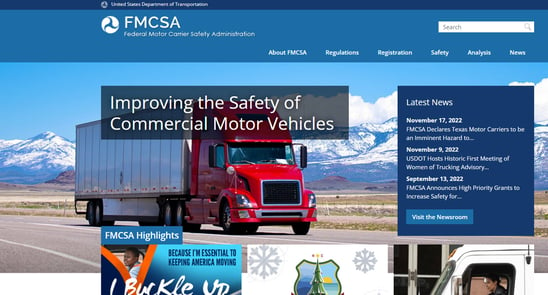FMCSA Authorizes Oral Fluid Testing
On May 2, 2023 the Department of Transportation (DOT) published a final rule in the Federal Register authorizing oral fluid testing as a method of conducting DOT controlled drug tests. This amended rule became effective on June 1st.
While the rule is now in effect, carriers shouldn’t rush out and start utilizing oral fluid testing as part of their DOT controlled drug testing process just yet. For an employer to implement oral fluid testing, the U.S. Department of Health and Human Services (HHS) must first certify at least two laboratories to conduct the testing. Unfortunately, this has not been done yet.
According to a June 1st article by Jason Cannon, chief editor of the Commercial Carrier Journal, the National Drug Screening President, Joe Reilly recently said, “no labs have even applied for HHS approval yet. I met with all of them last week and all said late 2023 or early 2024 before they expect to be approved and operational with oral fluid testing,”
Once labs do get approved, and the process of using oral fluid for DOT tests can start, there will be several key advantages. Perhaps the biggest of which is that it is significantly more difficult, if not impossible to “cheat”. Many experienced drug users are routinely ready or prepared to be selected for a DOT test with either synthetic or borrowed urine that they substitute for their own in order to “pass” the test. Because the oral fluid test occurs directly in the presence of the tester, who physically swabs the cheek of the person being tested, cheating is virtually impossible, unlike with urine tests which are most often done behind closed doors to protect people’s privacy.
This brings up another huge advantage. Oral fluid testing can be done virtually anywhere with no need for an actual restroom. Satellite locations that might not have a restroom can still be used for oral fluid testing, as long as there is some location for the person being tested to meet the person conducting the test. Additionally, oral fluid testing virtually eliminates the issue of a “shy-bladder” for those who might not be able to produce enough of a urine sample to be tested.
There are a few things to consider before implementing oral fluid testing. While the rule was passed allowing the practice, it doesn’t necessarily mean it has to replace previous methods of testing. While there are some distinct advantages, blood and urine testing are still accurate and reliable testing methods, and the regulations do not mandate one method over the other, and carriers are not required to pick one method or the other. Carriers have the choice of which method of testing to use each time a test is needed. This being said, if a carrier does choose to move forward with oral fluid testing, it’s advisable to update your controlled drug and alcohol testing policy to be consistent with current regulations and practices involving this type of testing.

